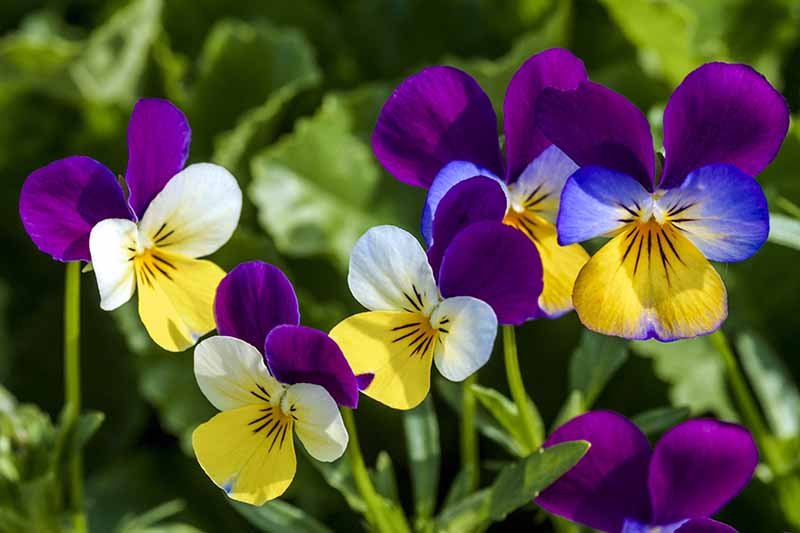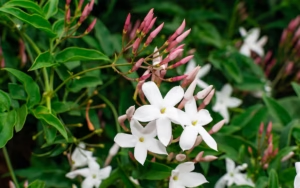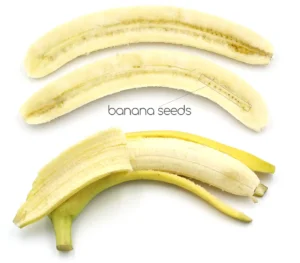Violet flowers are delicate, beautiful, and easy to grow, making them a popular choice for gardeners. With their vibrant colors and soft fragrance, these flowers can add charm to any garden or home. In this comprehensive guide, we’ll walk you through every step of growing, caring for, and enjoying violet flowers. From planting and transplanting to dealing with pests and ensuring healthy blooms, we cover all the essential tips you need to cultivate healthy violet plants.
Basic Violet Information
| Common Name | Violet |
|---|---|
| Botanical Name | Viola spp. |
| Family | Violaceae |
| Plant Type | Perennial |
| Mature Size | 6–12 inches tall |
| Sun Exposure | Partial shade to full sun |
| Soil Type | Well-drained, loamy |
| Soil pH | 6.0–7.5 (slightly acidic to neutral) |
| Hardiness Zones | 3–9 |
| Native Area | North America, Europe |
| Toxicity | Non-toxic to humans, but may be mildly toxic to pets (especially cats and dogs) if ingested |
Planting and Transplanting Violet Flowers
Planting violets is a straightforward process that requires the right conditions to ensure healthy growth. Violets prefer cooler weather, so they thrive in the spring or fall when temperatures are mild. Here’s a step-by-step guide to planting violets in your garden or in containers:
- Choose the Right Location
Violets do best in locations that provide partial shade, though they can tolerate full sun in cooler climates. Make sure the soil is well-drained to avoid waterlogging, which can cause root rot. - Prepare the Soil
Loamy, slightly acidic soil is ideal for violets. Before planting, amend the soil with compost or organic matter to improve fertility and drainage. A soil pH of 6.0 to 7.5 is preferred. - Planting Violets in the Ground
Dig a hole slightly larger than the root ball of the violet plant. Space plants about 6 to 8 inches apart to allow for proper air circulation. Gently place the violet in the hole and fill it with soil, ensuring that the crown of the plant is level with the surrounding ground. Water thoroughly. - Planting Violets in Containers
Choose a container with drainage holes and fill it with a well-draining potting mix. Plant your violets similarly to how you would in the ground, but be sure to allow for drainage to prevent water from sitting around the roots. - Transplanting Violets
If you need to transplant violets, do so during the cooler months, either in spring or fall. When moving violets, try to keep the root ball intact, and avoid disturbing the plant too much to prevent transplant shock.
Violet Flowers Care
Violet flowers are relatively low-maintenance, but they do need some basic care to thrive. Here’s what you need to know about caring for your violets:
- Watering
Violets prefer consistently moist soil but do not like to sit in water. Water them regularly, especially during dry spells, but be sure the soil drains well. Avoid wetting the foliage to reduce the risk of fungal diseases. - Fertilizing
Violets are light feeders, so you don’t need to fertilize them often. Use a balanced, water-soluble fertilizer once a month during the growing season to encourage healthy foliage and flowers. Too much fertilizer can lead to leggy growth, so be cautious. - Mulching
A layer of mulch around the base of the plant can help retain moisture and regulate soil temperature. Organic mulches, such as shredded leaves or bark, work well. - Deadheading
To keep your violets looking neat and encourage continuous blooming, remove spent flowers regularly. This process, called deadheading, prevents the plant from putting energy into seed production and encourages new blooms.
Types of Violet Flowers
Violets come in many varieties, each with its unique characteristics. Some of the most popular types include:
- Sweet Violet (Viola odorata)
Known for its fragrant flowers, sweet violets are often used in perfumes and have medicinal properties. These flowers are usually purple but can also come in shades of white and pink. - Common Violet (Viola sororia)
This native North American violet produces beautiful purple blooms and is often found growing in woodlands or along the edges of forests. - Pansy (Viola tricolor var. hortensis)
Pansies are a hybrid variety of violets known for their large, colorful flowers. They come in a wide range of colors, from purples to yellows, and are often used in bedding plants. - Tufted Violet (Viola pedata)
Tufted violets have distinctive, deeply lobed leaves and produce bright purple flowers. These violets are native to North America and are particularly suited to dry, rocky soils. - Johnny Jump-Up (Viola tricolor)
A small, colorful violet variety with yellow, purple, and white flowers, the Johnny Jump-Up is known for its spreading nature and ability to grow in a variety of conditions.
Pruning Violet Flowers
Pruning is an essential part of violet flower care. While violets generally don’t require heavy pruning, regular maintenance can help keep them healthy and attractive.
- Removing Dead Flowers
To promote more blooms and prevent the plant from wasting energy, remove dead or faded flowers regularly. This is especially important for varieties that flower profusely. - Trimming Leggy Growth
If your violet starts to look leggy or has sparse foliage, trim back the stems to encourage new growth. Be careful not to cut into the crown of the plant, as this can damage it. - Cutting Back in Fall
After the flowering season, you can cut back any dead or damaged foliage to keep the plant neat. However, avoid cutting the plant back too hard, as violets may not tolerate heavy pruning.
Propagating Violet Flowers
Propagating violets can be done through several methods, allowing gardeners to multiply their plants. Here’s how you can propagate violets:
- Leaf Cuttings
Take a healthy leaf from your violet and place it in a container with moist, well-draining soil. Ensure the leaf is positioned upright and covered with a plastic bag or dome to retain humidity. In a few weeks, the leaf will begin to form roots. - Division
Another method of propagation is dividing the plant. Gently dig up a mature violet plant and separate it into smaller sections, each with roots and a crown. Replant these sections in new pots or garden beds. - Seed Propagation
Violets can also be grown from seeds, though it requires patience. Start by collecting seeds from spent flowers or purchasing them from a nursery. Plant the seeds in a tray with a fine, moist soil mix and cover lightly. Keep the tray in a warm, bright location until the seeds germinate.
How to Grow Violet Flowers from Seeds
Growing violets from seeds can be a rewarding process, though it may take some time. Here’s how to get started:
- Collecting Seeds
After the flowers have faded, allow the seed pods to mature on the plant. Once they turn brown, collect the seeds and store them in a cool, dry place. - Sowing Seeds Indoors
Fill a seed tray or small pots with a fine, moist seed-starting mix. Sprinkle the seeds evenly on the surface, as they need light to germinate. Press them lightly into the soil without covering them. Keep the soil moist but not soggy. - Germination
Place the seed trays in a bright area but out of direct sunlight. Maintain a temperature between 60–70°F (15–21°C) to encourage germination. Germination can take anywhere from two to six weeks, depending on the variety. - Transplanting Seedlings
Once the seedlings have developed a few sets of leaves, they can be transplanted into larger pots or directly into the garden. Harden them off by gradually exposing them to outdoor conditions for a few hours each day.
Potting and Repotting Violet Flowers
Violet flowers are ideal for container gardening, especially in areas with limited space. Here’s how to pot and repot violets:
- Choosing the Right Pot
When potting violets, choose a container that has drainage holes. The pot should be just slightly larger than the root ball of the plant to prevent water from accumulating at the bottom. - Potting Mix
Use a light, well-draining potting mix. You can add perlite or sand to improve drainage and prevent the roots from sitting in moisture. - Repotting
Repot violets every couple of years to refresh the soil and provide more space for growth. When repotting, gently remove the plant from its old pot, check the roots for any damage, and trim back any excessively long or dead roots before placing it into a new pot.
Overwintering Violet Flowers
Violet flowers are hardy in many regions, but they still require some protection during the winter months, especially in colder climates. Here are tips to ensure your violets survive the winter:
- Mulching
A thick layer of mulch around the base of your violets helps insulate the soil and protect the roots from freezing. Use organic mulch like straw or shredded leaves. - Bring Containers Indoors
If you’ve planted violets in containers, bring them inside during extreme cold weather. Place them in a cool, bright spot like a windowsill or sunroom. - Watering in Winter
During the winter months, violets need less water. Ensure the soil is dry before watering and reduce watering frequency to avoid root rot.
Harvesting Violet Flowers
Violet flowers can be harvested for culinary uses or to make extracts. Here’s how to do it:
- Timing
Harvest violets when they are fully open and at their peak. This is when they are most fragrant and flavorful. - Cutting Flowers
Use sharp scissors or pruning shears to cut the flowers, being careful not to damage the plant. Harvest the flowers early in the morning when they are fresh and dewy. - Storing Flowers
Violets are best used fresh, but they can also be dried for later use. Place them on a paper towel and allow them to air dry.
Uses for Violet Flowers
Violet flowers are versatile and can be used for a variety of purposes:
- Culinary Uses
Violet flowers are edible and can be used to garnish salads, cakes, or desserts. They can also be made into syrup or candied for use in beverages or as a sweet treat. - Medicinal Uses
Historically, violets have been used in herbal medicine for their anti-inflammatory and soothing properties. They are believed to help with respiratory conditions, skin irritations, and even anxiety. - Cosmetic Uses
The essential oil from violets is used in perfumes and skincare products. Violet extracts have soothing properties and can be found in creams or lotions for sensitive skin.
Common Problems with Violet Flowers
Though violets are relatively hardy, they can still face some challenges. Here are some common problems:
- Powdery Mildew
A fungal disease that causes white, powdery spots on leaves. To prevent this, ensure proper air circulation and avoid watering the leaves directly. - Root Rot
Caused by overly wet conditions, root rot can lead to wilting or yellowing leaves. Ensure the soil drains well and avoid overwatering. - Yellowing Leaves
This can be caused by too much sun, insufficient watering, or nutrient deficiencies. Adjust the care routine accordingly to address the problem.
Common Pests & Plant Diseases
Violet flowers are prone to a few pests and diseases:
- Aphids
These tiny pests can cause wilting and distortions in the leaves. Spray aphids off with water or use insecticidal soap. - Slugs and Snails
These pests enjoy eating the soft foliage of violets. Use barriers like copper tape or organic slug repellents to protect your plants. - Fungal Infections
To prevent fungal infections, avoid overhead watering and ensure proper spacing between plants for good airflow.
How to Get Violet Flowers to Bloom
To encourage consistent blooming, follow these tips:
- Proper Light
Violets need at least 4–6 hours of indirect sunlight daily. If they aren’t blooming, try moving them to a sunnier spot. - Temperature Control
Violets bloom best in cooler temperatures, between 60°F and 70°F (15–21°C). Avoid placing them in hot, dry environments. - Nutrient Management
Regular feeding with a balanced fertilizer will encourage continuous blooms. Ensure the plant isn’t overcrowded or stressed, as this can also limit blooming.
FAQ
Q1: Can violets survive in full sun?
Yes, violets can tolerate full sun in cooler climates, but they generally prefer partial shade, especially in hot weather.
Q2: Are violets toxic to pets?
While violets are non-toxic to humans, they can be mildly toxic to pets like cats and dogs if ingested.
Q3: Can violets be grown indoors?
Yes, violets can be successfully grown indoors, provided they receive sufficient light and are in a well-drained potting mix.










